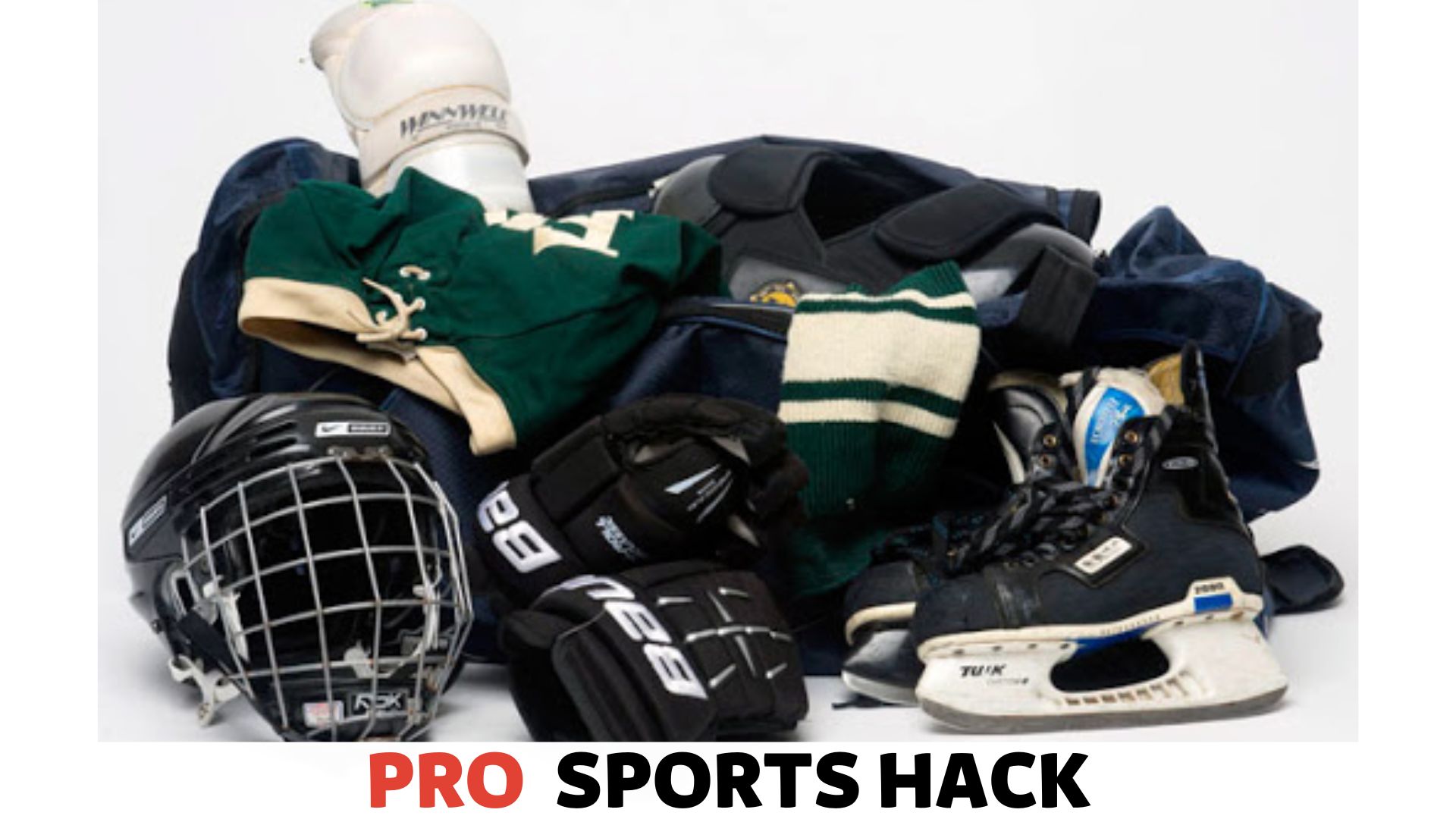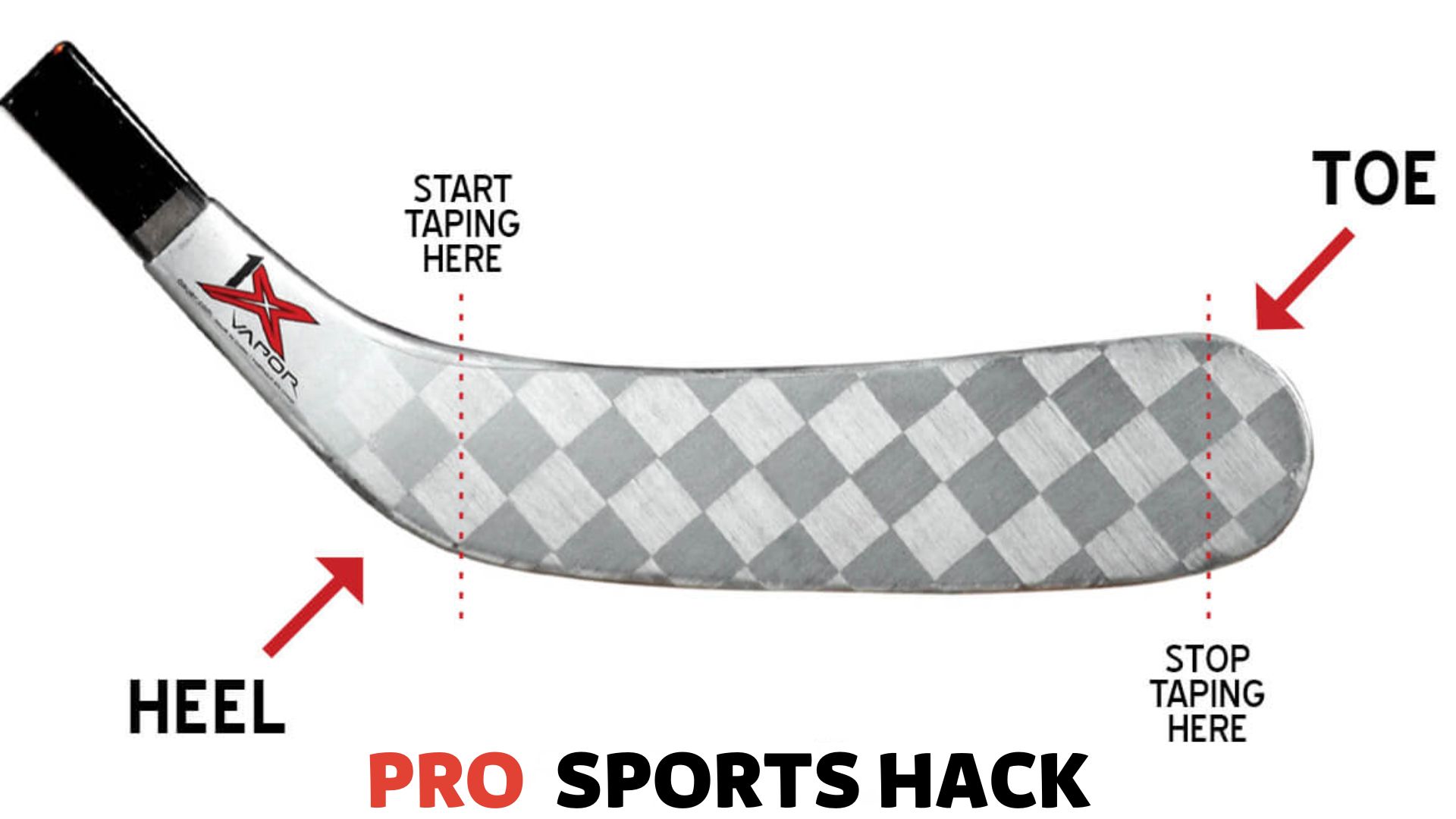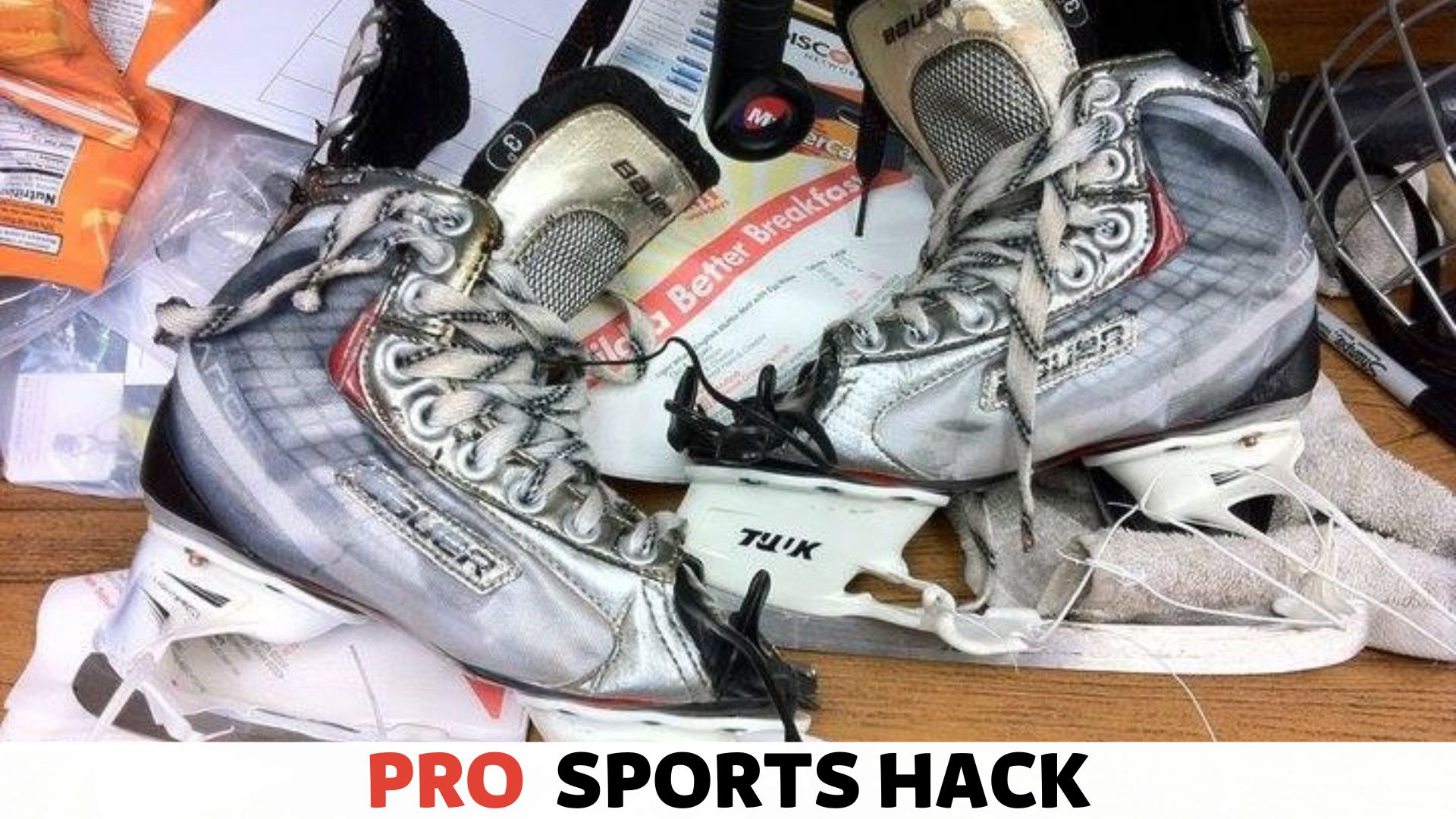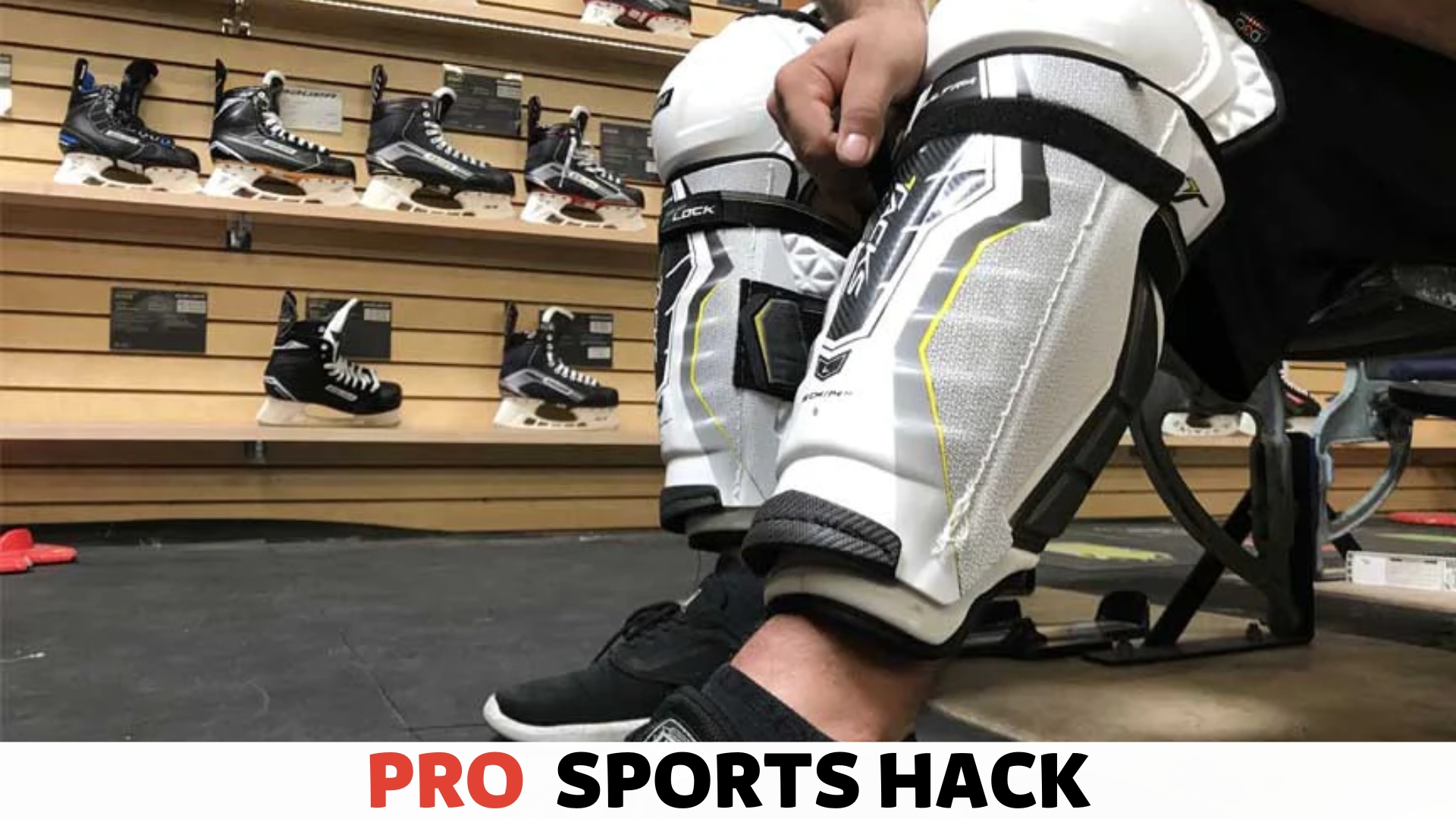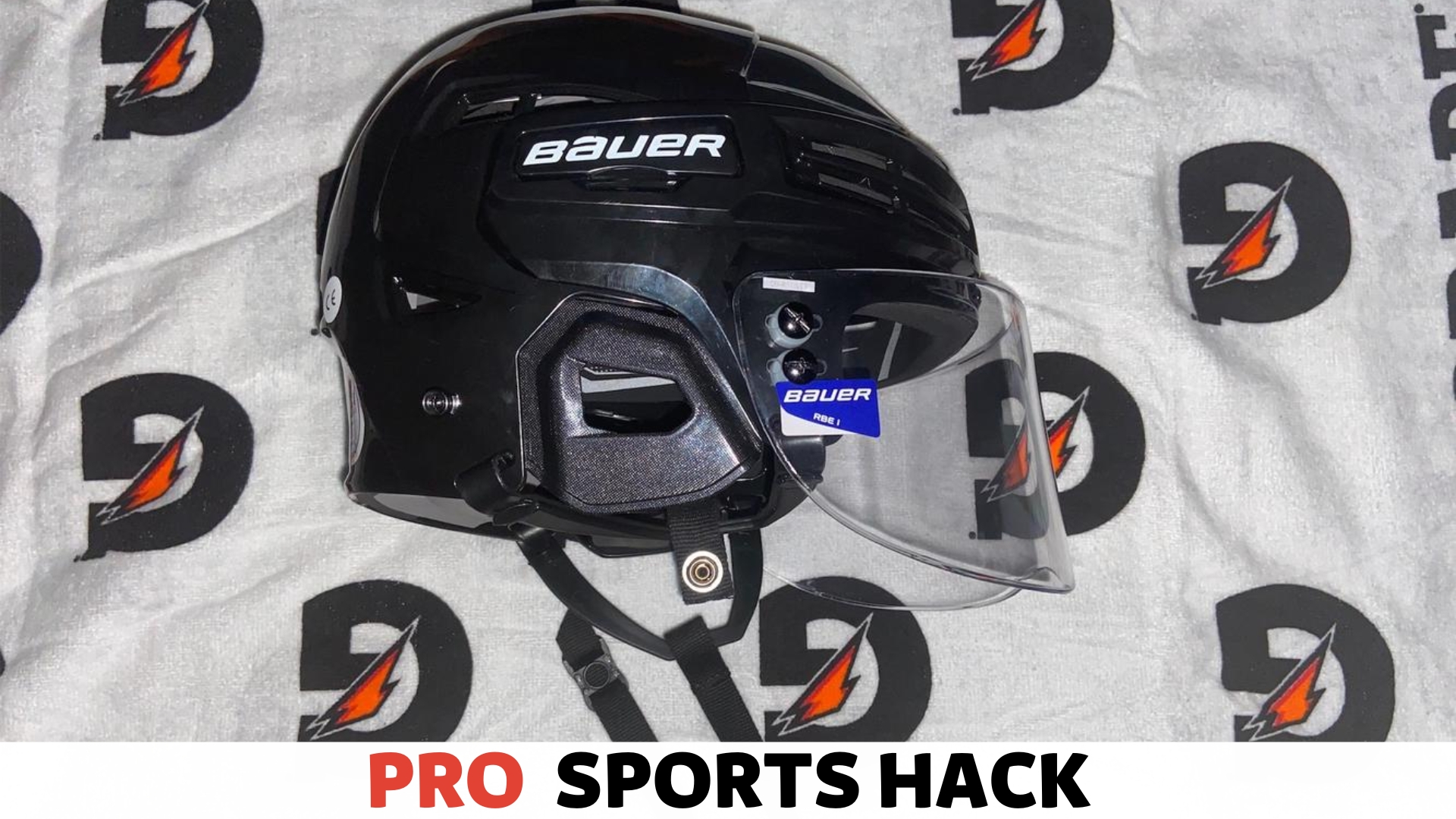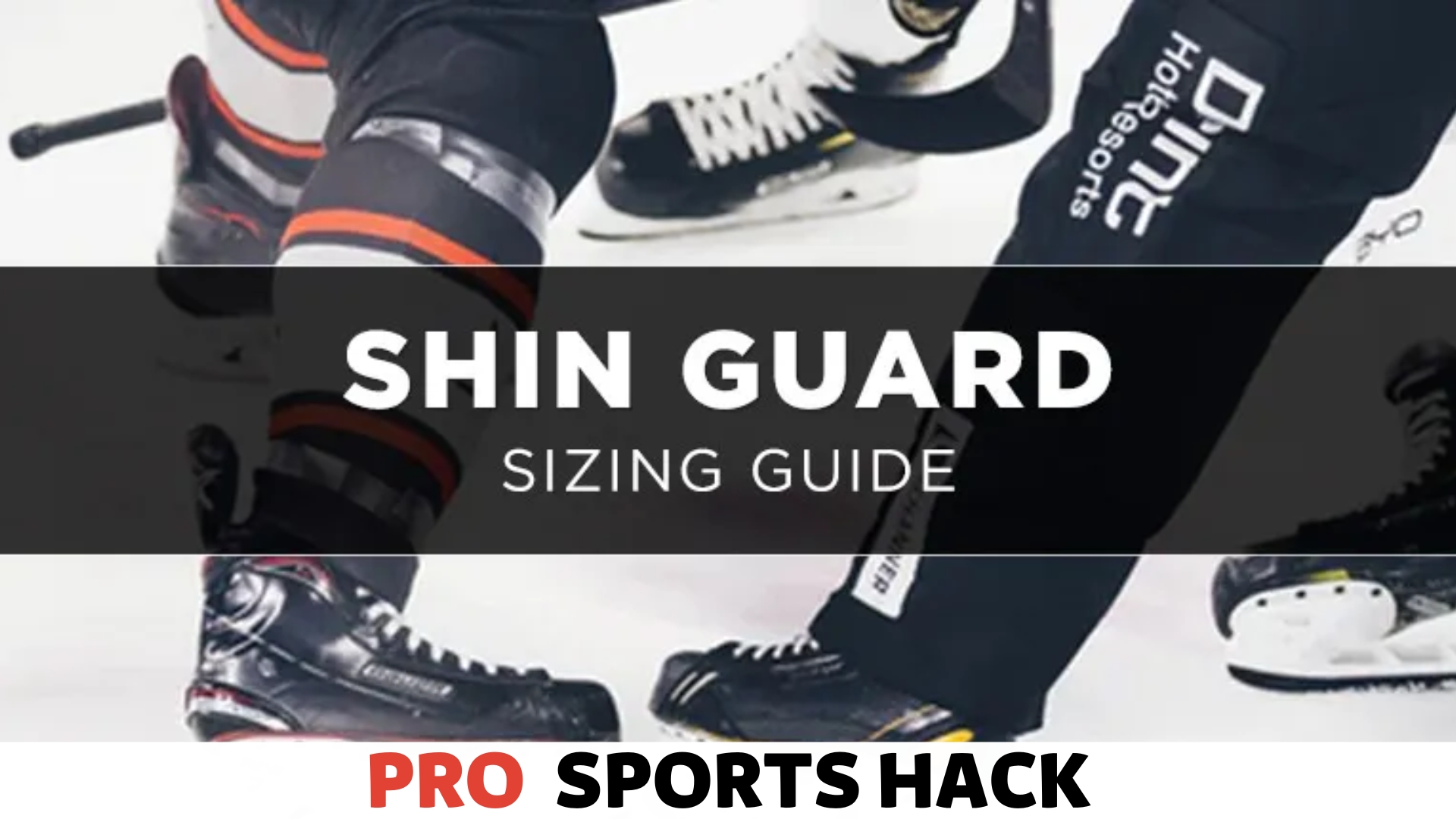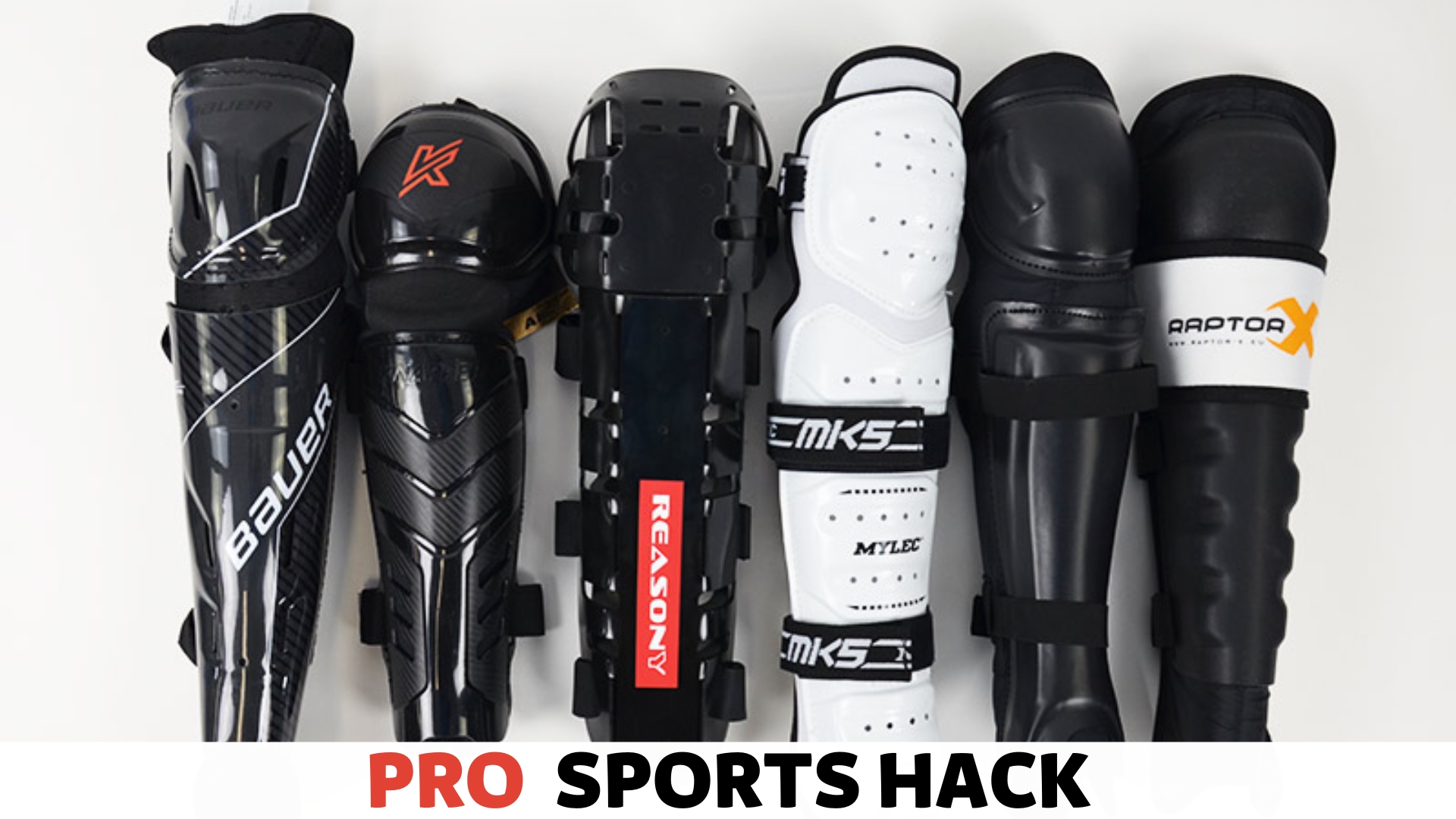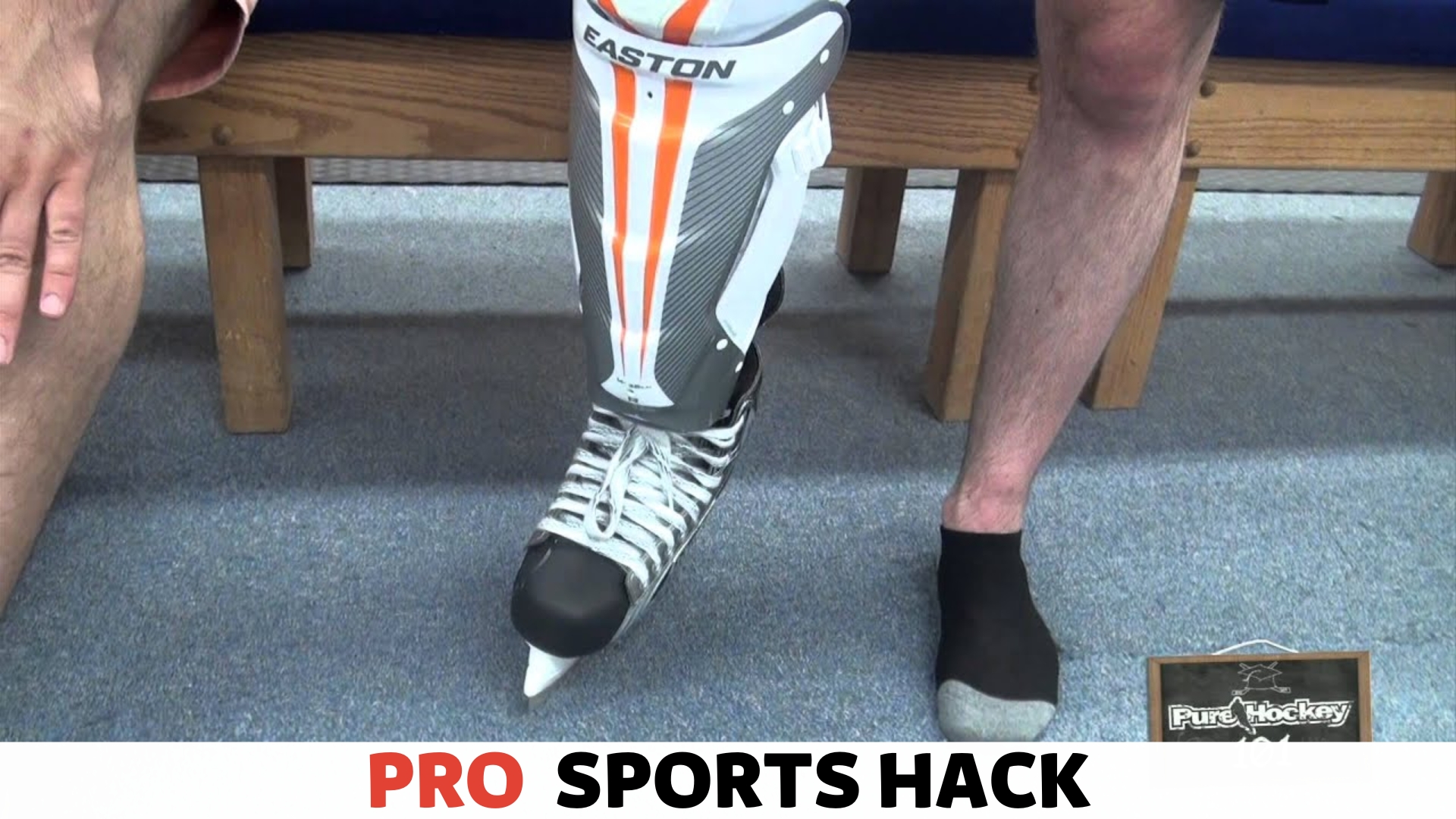
Hockey referee protective equipment includes a helmet, visor, throat protector, chest protector, shin guards, and gloves. These items are essential for the safety and protection of referees during a hockey game.
Ensuring Safety and Protection During Games
Hockey referees are crucial in ensuring fair play and maintaining order. In a fast-paced and physical sport like hockey, referees need to have the necessary protective equipment to keep them safe from potential injuries.
The role of protective equipment in a hockey referee’s safety cannot be overstated.
In this blog post, we will explore the importance of proper fitting and quality gear for referees, highlighting how it contributes to their overall safety and protection during games.
Role of Protective Equipment in Hockey Referee’s Safety
The role of protective equipment in a hockey referee’s safety is paramount. Referees are exposed to the same risks as the players regarding flying pucks, stick checks, and collisions on the ice.
Without the right gear, they would be susceptible to serious injuries that could potentially end their careers.
Therefore, by wearing a complete set of protective equipment designed specifically for their needs, referees can minimize the risks and confidently carry out their duties on the ice.
In our comprehensive guide, discover how hockey shin guards should fit to ensure optimal protection and comfort on the ice.
Importance of Proper Fitting and Quality Gear
Proper fitting and quality gear are of utmost importance for hockey referees. Ill-fitting equipment can be uncomfortable and pose a distraction during games.
Moreover, poorly made gear may not provide the necessary protection against impacts. Referees need to ensure that their equipment fits them properly, offering unrestricted movement and maximum protection.
Investing in high-quality gear is essential for referees. Quality equipment is often made from durable materials and undergoes rigorous testing to meet the required safety standards.
By wearing gear of the highest quality, referees can have greater confidence in their safety, knowing that their equipment has been designed to withstand the demands of the game.
Additionally, high-quality gear often incorporates advanced technologies to enhance performance and comfort. For example, helmets with optimized padding and ventilation systems allow referees to stay cool and focused during intense game situations.
Similarly, gloves with reinforced padding and flexible construction offer the perfect balance between protection and agility, enabling referees to make quick and accurate calls.
In conclusion, hockey referees must prioritize safety and protection by wearing proper fitting and high-quality protective equipment. It not only safeguards them from potential injuries but also allows them to perform their duties effectively.
By investing in the right gear, referees can confidently navigate the fast-paced and physical nature of the game, ensuring fair play and contributing to an enjoyable hockey experience for everyone involved.
Essential Protective Gear
Helmet With a Full Face Mask for Head Protection
One of the most essential protective gear for a hockey referee is the helmet with a full face mask. This combination provides crucial head protection during the fast-paced and physical nature of the game.
The helmet is designed to absorb impact and reduce the risk of serious head injuries. The full face mask, with its reinforced cage, shields the face and prevents potential injuries to the eyes, nose, and mouth.
Chest Protector to Shield Vital Organs
Next on the list of essential protective gear for hockey referees is the chest protector. This equipment shields the referee’s vital organs, such as the heart, lungs, and ribs, from potential impact and injuries.
The chest protector is designed with shock-absorbing materials and strategically placed padding to distribute the force of any impact and minimize the risk of serious injuries.
Shin Guards to Protect Lower Legs
When protecting the lower legs, hockey referees rely on shin guards. These protective shields guard against slashes, pucks, and collisions during the game.
The shin guards provide coverage from the top of the knee to the ankle, ensuring comprehensive protection for the referee’s lower legs. With reinforced padding and a secure fit, these guards minimize the risk of painful injuries.
Gloves for Hand and Finger Protection
Hand and finger protection is crucial for hockey referees, and that’s where gloves come into play. These specially designed gloves provide ample padding and reinforced protection for the hands and fingers.
The gloves not only shield the referee’s hands from impact but also provide an excellent grip on the whistle and allow for dexterity while managing the game.
With the proper gloves, a referee can confidently make calls and handle the fast-paced action on the ice without compromising safety.
In conclusion, the essential protective gear for a hockey referee includes a helmet with a full face mask, a chest protector, shin guards, and gloves. Each gear piece serves a specific purpose in safeguarding the referee from potential injuries.
By wearing this protective equipment, referees can focus on officiating the game confidently, knowing they are well-protected.
Explore the ins and outs of field hockey shin guards sizing with our comprehensive guide, offering valuable insights to help you make the right choice for your game.
Key Features and Considerations
Regarding hockey referee protective equipment, some key features and considerations play a crucial role in ensuring the safety and performance of referees on the ice.
From durability and material quality to ergonomic design and adjustability, each aspect creates a comfortable and secure experience for the referees.
Let’s delve into these essential factors that make a difference.
Durability and Material Quality for Longevity
Durability and material quality are of utmost importance for hockey referee protective equipment. A referee’s gear goes through rigorous use, making it essential to invest in gear that can withstand the demands of the game.
The equipment should be crafted with high-quality materials that resist impacts, abrasions, and general wear and tear. The longevity of the equipment not only ensures cost-effectiveness but also guarantees the safety of the referee throughout countless games.
Ergonomic Design for Comfort and Mobility
An ergonomic design ensures both comfort and mobility for hockey referees. Referees need to move swiftly and keep up with the fast-paced game. Therefore, their protective equipment must facilitate smooth, natural movements without hindering speed or agility.
The gear should be designed with proper padding in strategic areas to provide sufficient protection while allowing referees to bend, crouch, and skate comfortably.
It’s essential to choose equipment that fits well and does not restrict movement, enabling referees to focus on officiating the game effectively.
Adjustability to Accommodate Various Body Sizes
Hockey referees come in different shapes and sizes, and their protective equipment should accommodate these variations. Proper adjustability is necessary to ensure the gear can be tailored to fit individual body sizes.
This allows referees to have the right level of protection without compromising comfort.
Adjusting straps, padding, and closures ensures a secure fit and prevents any distractions during gameplay. A well-fitting and adjustable equipment also reduces the risk of injuries from ill-fitting gear.
Helmets and Face Masks
Different Types of Helmets Available
Hockey referees require helmets that provide maximum protection while ensuring comfort and visibility. Here are some different types of helmets specifically designed for hockey referees:
| Helmet Type | Description |
|---|---|
| Traditional Helmet | A classic design with a hard shell and foam padding for cushioning and impact absorption. |
| Cage Helmet | Includes a face cage that protects the referee’s face from flying pucks or sticks. |
| Hybrid Helmet | Combines the shell and padding features of a traditional helmet with the added protection of a cage. |
Benefits of Full Face Masks
Full-face masks are an essential component of hockey referee protective equipment. They provide numerous benefits, including:
- Face Protection: Full face masks offer comprehensive coverage to protect the referee’s entire face, including the chin, cheeks, and eyes.
- Impact Resistance: These masks are made from durable materials that can withstand high-velocity impacts from pucks and sticks.
- Improved Visibility: Clear and high-quality materials in full-face masks ensure excellent visibility, allowing referees to make accurate calls on the ice.
- Prevention of Facial Injuries: By providing a barrier between the referee’s face and potential hazards, full face masks greatly reduce the risk of facial injuries.
Additional Features Like Sweatbands and Chin Straps
Hockey referee helmets often have additional features that enhance their comfort and stability. Some of these features include:
- Sweatbands: Built-in sweatbands wick away moisture from the forehead, keeping the referee comfortable and preventing sweat from affecting vision.
- Chin Straps: Chin straps ensure the helmet stays securely in place during intense game situations, minimizing the risk of it shifting or falling off.
Regarding hockey referee protective equipment, helmets and face masks are of utmost importance. Different types of helmets cater to the preferences and needs of referees, while full-face masks provide comprehensive protection.
Additional features like sweatbands and chin straps further enhance the functionality and comfort of these essential pieces of equipment.
Chest and Torso Protection
The chest and torso are crucial areas that require proper protection for hockey referees. Chest protectors are specially designed to shield these vulnerable areas from potential impacts and injuries during gameplay.
In this section, we will discuss the importance of chest protectors, the differences between traditional and modern designs, and the enhanced features they offer, such as shoulder caps and spine protection.
Importance of Chest Protectors
In a fast-paced and physical game like hockey, referees often find themselves in the middle of intense action. Being positioned close to the play, they are exposed to potential collisions with players, sticks, and flying pucks.
Chest protectors serve as a safeguard against these risks as they offer protection to vital internal organs like the heart, lungs, and ribs.
Differences Between Traditional and Modern Designs
Over the years, the design of chest protectors for hockey referees has evolved significantly. Traditional designs primarily focused on providing basic padding and coverage.
However, modern chest protectors are crafted to offer improved protection while ensuring ease of movement and flexibility.
Modern chest protectors feature lightweight yet durable materials that provide excellent impact resistance. These materials are designed to absorb and disperse the force of a collision, minimizing the risk of injury.
They also have adjustable straps and closures, allowing referees to achieve a secure and customized fit.
Enhanced Features: Shoulder Caps and Spine Protection
One of the notable enhancements in the chest protector design is the inclusion of shoulder caps. These shoulder caps provide additional protection to the referee’s shoulders, shielding them from direct hits or accidental contact.
In addition to shoulder caps, many modern chest protectors incorporate spine protection features. This extra layer of padding safeguards the spinal column, reducing the risk of spinal injuries.
Some chest protectors even include removable or adjustable spine protectors to cater to individual preferences and needs.
Overall, the advancements in chest protector design have revolutionized the level of protection available to hockey referees.
The combination of lightweight materials, customizable fit, shoulder caps, and spine protection ensure that referees can confidently officiate the game while minimizing their vulnerability to potential injuries.
Find your perfect fit on the ice with the ultimate hockey shin pads size guide, providing expert tips and recommendations for players of all levels.
Lower Body Protection
Regarding officiating a fast-paced game like hockey, referees need to prioritize their safety on the ice. Lower body protection is a crucial aspect of their gear, and one of the key components of their lower body protection is shin guards.
Shin guards provide essential coverage and cushioning for the legs, guarding against injuries caused by wayward pucks, sticks, and collisions.
In this section, we will delve into the different aspects of shin guards for referees and why finding the right fit and coverage is paramount.
Overview of Shin Guards for Referees
Shin guards for referees are specifically designed to balance comfort, flexibility, and protection. They consist of a hard outer shell, usually made of durable plastic or composite materials, which can withstand impact and provide a robust defense against flying objects.
The inner lining is often made of soft padding or foam, ensuring a comfortable fit and absorbing the shock of any impact.
Different Styles and Sizing Options
Referees have various options regarding the style and sizing of shin guards. Different styles offer varying levels of protection, flexibility, and mobility. Here are some common styles:
- Traditional shin guards: These are the conventional style, with a hard shell covering the front of the leg and straps or Velcro fastenings to secure them.
- Anatomical shin guards: These are contoured to fit the shape of the leg, providing a more personalized fit and improved comfort.
- Hybrid shin guards: These combine the best features of traditional and anatomical designs, offering enhanced protection and mobility.
When it comes to sizing, referees should prioritize getting the right fit. Ill-fitting shin guards can impede mobility, cause discomfort, and compromise safety.
Referees should measure the length of their shin from the kneecap to their ankle to determine the appropriate size. Most shin guards have adjustable straps or closures to ensure a secure and personalized fit.
Importance of Proper Fit and Coverage
Proper fit and coverage are paramount regarding shin guards for referees. Referees should aim for shin guards that cover the entire length of their shins, from just below the knee to above the ankle.
Adequate coverage is vital to protect against injuries from flying pucks, sticks, or accidental contact during the game.
Additionally, referees should ensure that the shin guards are snug but not too tight, allowing flexibility and unrestricted movement on the ice.
Without proper fit and coverage, referees risk leaving vulnerable areas exposed, increasing the likelihood of injuries.
It is crucial to prioritize safety and choose shin guards that provide optimal protection while allowing referees to officiate effectively and confidently.
Cleaning and Sanitizing
Proper cleaning and sanitizing of hockey referee protective equipment is essential to maintain its functionality and extend its lifespan.
Not only does regular cleaning remove dirt and sweat, preventing unpleasant odors, but it also helps to eliminate bacteria and reduce the risk of infections.
In this section, we will explore the importance of maintaining proper hygiene practices for your hockey referee protective equipment and provide you with valuable tips on how to avoid unpleasant odors and bacteria buildup.
Proper Cleaning Techniques
When cleaning your hockey referee protective equipment, it’s crucial to follow the manufacturer’s instructions. Most equipment can be hand-washed using mild detergent and warm water.
To ensure a thorough cleaning, pay special attention to areas that come into direct contact with your skin, such as the chin guard, ear loops, and sweatband.
Use a soft cloth or sponge to gently scrub the surfaces, careful not to damage any straps or padding.
After cleaning, rinse the equipment thoroughly with clean water to remove any detergent residue. Remove all excess water by gently squeezing or patting the equipment, and then allow it to air dry in a well-ventilated area.
Avoid exposing the equipment to direct sunlight or intense heat, which can cause damage.
Sanitizing Your Equipment
Regularly sanitizing your hockey referee protective equipment is crucial to eliminate bacteria and prevent infections. One effective way to sanitize your equipment is by using warm water and vinegar.
Fill a spray bottle with the solution and generously spray the equipment, paying close attention to high-contact areas. Let the solution sit for a few minutes, and then wipe it off with a clean cloth.
Another option for sanitization is to use specialized disinfectant sprays or wipes designed for sports equipment. These products are formulated to kill bacteria and eliminate odors, ensuring your gear stays fresh and hygienic.
Always follow the instructions provided by the manufacturer when using these products to achieve the best results.
Tips to Avoid Odors and Bacteria Buildup
Preventing unpleasant odors and bacteria buildup in your hockey referee protective equipment is not only important for hygiene but also improves your overall comfort during games.
Here are a few tips to help you maintain fresh and clean equipment:
- Avoid storing damp equipment in a closed bag or locker, as it can create a breeding ground for bacteria. Instead, allow your gear to air dry completely before storing it.
- Consider using equipment deodorizers or odor-neutralizing sprays to keep your gear smelling fresh. These products can help absorb moisture and eliminate odors.
- Regularly inspect your equipment for any signs of wear or damage. Promptly repair or replace damaged parts to prevent bacteria from accumulating in crevices.
- Wash your hands thoroughly before and after handling your equipment to reduce the spread of bacteria and prevent cross-contamination.
By following these proper hygiene practices and regularly cleaning and sanitizing your hockey referee protective equipment, you can ensure that your gear stays in top condition and provides the necessary protection during games.
Maintaining good hygiene not only extends the lifespan of your equipment but also contributes to your overall safety and well-being.
Equipment Storage and Transport
In the fast-paced game of hockey, referees play a crucial role in maintaining fair play and ensuring the game is played within the rules. And just like the players, referees also need proper protective equipment.
But when the game is over, the question arises—how should referees store and transport their gear?
In this section, we’ll explore some tips for storing and organizing referee equipment, as well as travel-friendly solutions for referees on the go.
Tips for Storing and Organizing Gear
Proper storage and organization of referee gear not only ensures its longevity but also makes it easier to locate and use when needed. Here are some practical tips:
- Designated storage area: Set aside a dedicated space in your home or garage for storing your referee gear. This will help keep everything organized and readily accessible.
- Invest in a gear bag: A durable bag with compartments and pockets can help keep your equipment organized and protected. Look for a bag large enough to hold all your gear but also easy to carry.
- Separate clean and dirty gear: After each game, separate your clean gear from the dirty gear to prevent odors and bacteria from spreading. Consider using separate bags or compartments for this purpose.
- Hang your equipment: Hanging your gear, such as your jersey, pants, and pads, can help them dry faster and prevent the growth of bacteria. Install hooks or use a drying rack specifically designed for sports equipment.
- Keep accessories organized: Use small containers or pouches to store smaller accessories, such as whistles, penalty cards, and extra laces. This will help prevent them from getting lost or damaged.
Travel-friendly Solutions for Referees On the Go
Referees often need to travel for away games or tournaments. Here are some travel-friendly solutions to consider:
- Compact gear bags: If you frequently travel by plane or have limited space in your vehicle, consider using a compact gear bag that can easily fit in overhead compartments or tight spaces. Look for bags that are designed specifically for travel.
- Rolling gear bags: For referees with a larger amount of equipment, a rolling gear bag can be a convenient option. The wheels make it easy to transport your gear without straining your back.
- Portable drying racks: If you’re on the road and need to dry your gear between games, a portable drying rack can be a practical solution. Look for lightweight and foldable options that won’t take up too much space in your vehicle.
- Compact equipment organizers: To keep your gear organized during travel, consider using compact equipment organizers with multiple compartments and zipper closures. This will prevent your gear from shifting and getting damaged during transit.
- Use compression bags: If you need to save space in your luggage, consider using compression bags for your referee gear. These bags can compress your equipment, making it easier to pack and transport.
By implementing these storage and transport solutions, hockey referees can ensure that their gear remains organized, well-maintained, and always ready for the next game.
Whether finding your penalty cards quickly or efficiently packing for a road trip, proper equipment storage and transport can make a referee’s job easier and more enjoyable.
Inspection and Replacement
Regular inspections for wear and tear are essential for hockey referee protective equipment. As referees, our safety is paramount, and ensuring that our gear is in top-notch condition is crucial for a successful game.
By conducting routine inspections and promptly replacing damaged or worn-out equipment, we can guarantee that we are adequately protected on the ice.
Regular Inspections to Identify Wear and Tear
Inspecting your hockey referee’s protective equipment is a simple yet vital task that should never be neglected. By keeping a close eye on the condition of your gear, you are taking proactive steps to prevent any potential injuries during a match.
Regular inspections should be a part of your pre-game routine, ensuring everything is in proper working order.
During your inspection, pay close attention to any signs of wear and tear. Examine the materials for any cracks, tears, or significant signs of deterioration.
Look for loose or missing stitching, as well as any dents, scratches, or deformities in hard-shell equipment. It’s important to note that even seemingly minor damage can compromise the effectiveness of your protective gear.
| Equipment | Signs of Wear and Tear |
|---|---|
| Helmet | Cracks, missing padding, loose straps |
| Chest Protector | Torn or frayed straps, flattened padding |
| Elbow and Shin Guards | Cracked or missing plastic, loose straps |
| Gloves | Torn palms, worn-out padding |
By maintaining a detailed inventory of the condition of each piece of equipment, you will have a clear understanding of when replacements are necessary.
Remember, prevention is key, and catching potential issues early on will save you from any last-minute scrambling or unnecessary risks.
Signs That Indicate the Need for Replacement
There are certain signs you should be aware of that indicate the need for the replacement of your hockey referee protective equipment. While wear and tear can be expected over time, certain conditions are clear red flags that should prompt immediate action.
If any of the following signs are present, it’s crucial to replace the equipment:
- Significant cracks or structural damage.
- Frayed or torn straps that can’t be securely fastened.
- Lack of padding or padding that no longer offers sufficient protection.
- Visible wear and tear that compromises the equipment’s integrity.
- Equipment that no longer meets the required safety standards.
Replacing damaged or worn-out equipment might require an investment, but your safety should always be a top priority.
By promptly addressing any issues and ensuring that your gear is in prime condition, you can confidently step onto the ice, knowing that you are prepared to handle the demands of the game.
Frequently Asked Questions
Do Hockey Refs Wear Protective Gear?
Yes, hockey refs wear protective gear to ensure their safety. This includes helmets, visors, pads, and gloves.
What Equipment Do NHL Referees Wear?
NHL referees wear several equipment pieces, such as helmets, visors, whistles, black-and-white striped jerseys, pants, shin guards, elbow pads, gloves, and skates to ensure safety and officiate games effectively.
What Equipment Do You Need to Be a Hockey Referee?
To be a hockey referee, you need specific equipment. This includes a helmet, whistle, striped referee jersey, black pants, shin guards, ice skates, and a referee bag.
Do Hockey Refs Have to Wear Visors?
No, hockey refs do not have to wear visors.
What Are the Essential Hockey Referee Protective Equipment?
The essential hockey referee protective equipment includes a helmet, visor, chest protector, shin guards, and gloves.
Conclusion
Hockey referee protective equipment plays a crucial role in ensuring the safety of referees on the ice. From helmets and face masks to chest protectors and shin guards, these gear not only shield referees from potential injuries but also enhance their confidence and performance during games.
By investing in high-quality and properly fitting protective gear, referees can continue to officiate with peace of mind, knowing they are well-equipped to handle the fast-paced and physical nature of the sport. Stay safe, protected, and enjoy the game!




![Cat in the Chrysalis Spoiler: All You Need To Know [Updated] Cat in the Chrysalis Spoiler](https://prosportshack.com/wp-content/uploads/2024/02/Cat-in-the-Chrysalis-Spoiler-100x75.jpg)







